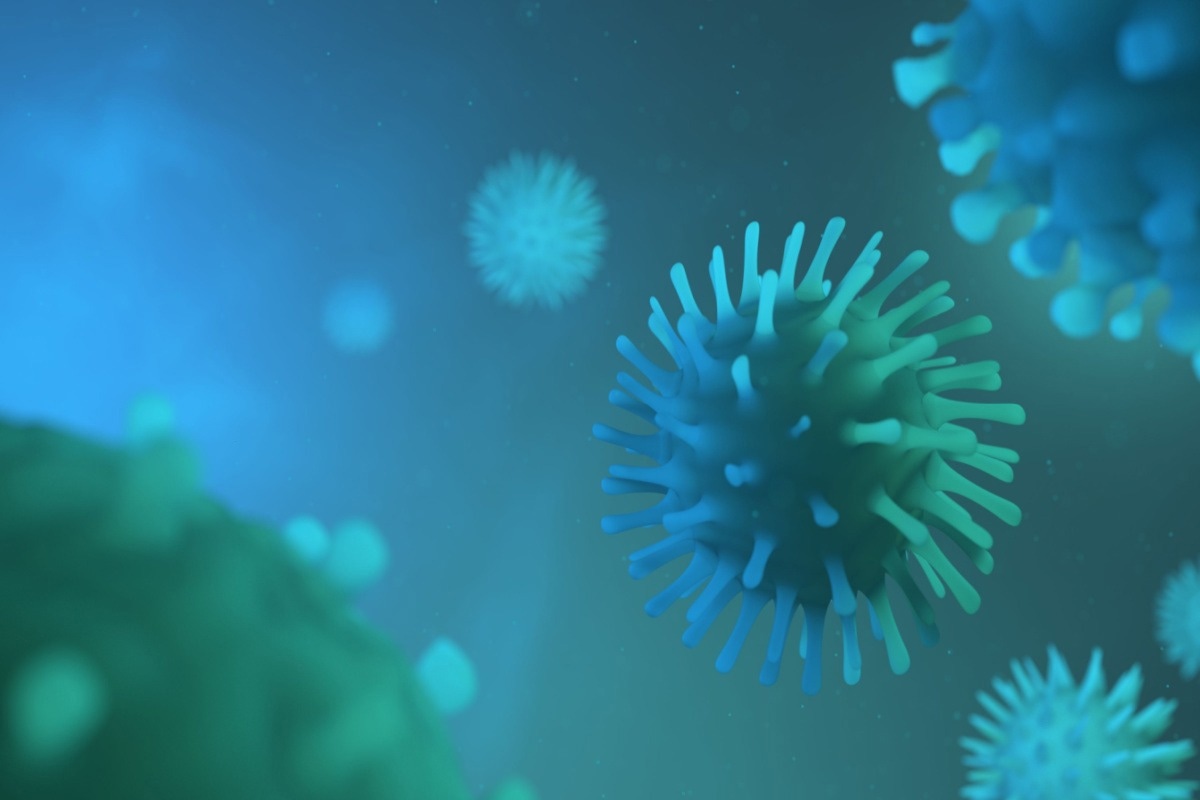A multicenter, randomized, placebo-controlled phase 2a clinical trial has recently been conducted to evaluate the efficacy of a nanotherapeutic compound OP-101 in treating severe coronavirus disease 2019 (COVID-19) patients. A detailed report of the clinical trial has been published in the journal Science Translational Medicine.
 Study: Dendrimer nanotherapy for severe COVID-19 attenuates inflammation and neurological injury markers and improves outcomes in a phase2a clinical trial. Image Credit: CROCOTHERY/Shutterstock
Study: Dendrimer nanotherapy for severe COVID-19 attenuates inflammation and neurological injury markers and improves outcomes in a phase2a clinical trial. Image Credit: CROCOTHERY/Shutterstock
Background
Hyperinflammation is a major hallmark of severe COVID-19, a novel disease caused by severe acute respiratory syndrome coronavirus 2 (SARS-CoV-2). Activated tissue macrophages and monocytes play crucial roles in hyperinflammation as well as the pathogenesis of acute respiratory distress syndrome (ARDS).
Besides respiratory distress, severe COVID-19 is associated with neurological symptoms, including delirium, agitation, encephalopathy, and stroke. A growing pool of evidence suggests that neurological consequences are associated with systemic inflammation that triggers neuroinflammation and brain dysfunction.
In this phase 2a clinical trial, scientists have investigated the safety and efficacy of OP-101 in ameliorating inflammation and brain injury in severe COVID-19 patients.
OP-101 is a hydroxyl-polyamidoamine dendrimer–N-acetylcysteine conjugate that has previously been tested in animal models of systemic and neuroinflammation. The compound exerts potent anti-inflammatory and antioxidant functions by releasing N-acetylcysteine in activated macrophages and microglia.
Trial design
A total of 24 patients with severe COVID-19 were randomized into four groups, including a placebo group and three treatment groups. In the treatment groups, the patients received a single intravenous dose of 2 mg/kg (n=6), 4 mg/kg (n=6), or 8 mg/kg (n=5) of OP-101. In the placebo group, seven patients received a single intravenous dose of a placebo drug.
In addition to OP-101 or placebo, all participants received corticosteroids as the standard of care treatment.
Therapeutic efficacy of OP-101
C-reactive protein (CRP) is a well-established marker of systemic inflammation. An elevated level of serum CRP has commonly been seen in severe COVID-19 patients.
In the trial, a steady and sustained reduction in serum CRP level was observed in patients treated with OP-101. Specifically, OP-101-treated patients exhibited a greater than 20% reduction in CRP level per day compared to a lower than 5% reduction in placebo-treated patients. The highest effect was observed at 4 mg/kg of OP-101 dose.
Neurological injury markers
Three markers of neurological injury, including neurofilament light chain (NFL), Tau protein, and glial fibrillary acidic protein (GFAP), were measured in the trial. Previous studies have shown that severe COVID-19 patients exhibit high serum levels of neurological injury markers, despite using corticosteroids as the standard of care.
In the trial, two higher doses of OP-101 (4 mg/kg and 8 mg/kg) showed significant efficacy in reducing the serum levels of NFL and GFAP compared to the placebo treatment. However, no significant treatment effect of OP-101 was observed for Tau protein.
Pro-inflammatory markers
Several inflammatory markers including tumor necrosis factor–α (TNF-α), interleukin (IL)-6, IL-8, IL-22, and IL-10 were measured in the trial.
The OP-101 treatment at a dose of 4 mg/kg showed significantly higher efficacy than the placebo treatment in reducing serum levels of TNF-α, IL-6, and IL-8. However, no significant treatment effect of OP-101 was observed for IL-10 and IL-22.
Clinical outcomes
A significant improvement in survival rate was observed among patients treated with OP-101. While 43% survival was observed in the placebo group, the treatment with 2 mg/kg, 4 mg/kg, and 8 mg/kg of OP-101 resulted in 67%, 100%, and 80% survival, respectively. Notably, none of the surviving patients in the OP-101 treatment groups required mechanical ventilation during the study period (60 days).
Overall, the risk of severe clinical outcomes (mechanical ventilation or death) at day 30 post-infusion was 71% in placebo-treated patients and 18% in OP-101-treated patients.
Safety profile of OP-101
No significant differences in adverse events were observed between the placebo and OP-101 treatment groups. Treatment-emergent adverse events were observed in 70% of OP-101-treated patients and 71% of placebo-treated patients. Treatment-emergent adverse events include either new-onset adversities or already-existing adversities that worsen because of the treatment.
Since all patients enrolled in the trial were critically ill, they are expected to exhibit treatment-emergent adverse events. This explains why no significant differences in adversities were observed between the groups.
To further investigate the safety profile of OP-101, two kidney injury markers (kidney injury molecule-1 and neutrophil gelatinase-associated lipocalin) were considered, given that OP-101 is primarily removed from the circulation through the kidney. However, no significant differences in the urinary levels of both markers were observed between the placebo and OP-101 treatment groups.
Significance
The clinical trial highlights the therapeutic efficacy of a nanomedicine OP-101 in critically ill COVID-19 patients. The compound exhibits high efficacy in reducing inflammatory and neurological injury markers and improving clinical outcomes.